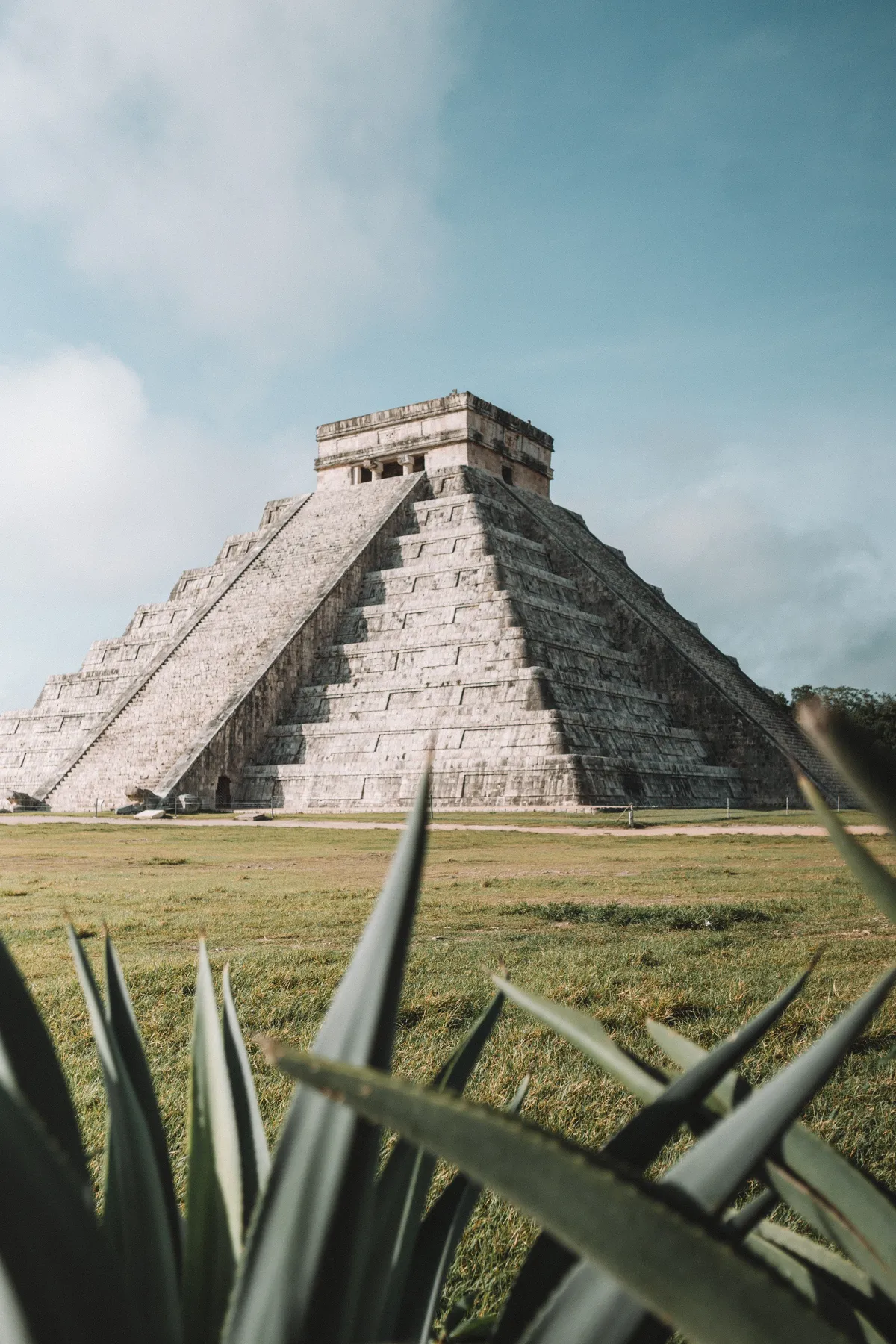The Yucatán Peninsula in Mexico is best known for tourism. Especially Cancun and the excursions in the region attract millions of tourists every year The white sandy beaches with clear water and palm trees attract thousands of tourists every year. But there are many more exciting facts about Mexico's vacation paradise: from Mayan history to the extinction of the dinosaurs.
The most interesting facts about the Yucatán Peninsula
How long is the limestone coast of Yucatán?
Yucatán has a limestone coastline that is one of the longest in the world. The total coastal length of the peninsula is about 683 miles (1,100 km). (source)
How many cenotes are there in Yucatán?
Cenotes: Yucatán is known for its cenotes, natural pools dug into the limestone. There are over 10,000 cenotes in Yucatán. An underground connected cave system has been discovered, which stretches over a length of 233 miles (376 km). (Source)
How many Mayan ruins are there in Yucatán?
Estimates range from 400 to 3,000, also depending on what is defined as a "ruin." Thus, a single Maya archaeological site may contain as many as 400 building ruins. What is clear is that Yucatán was an important part of the Maya Empire. However, the Maya extended over large parts of Mexico, Guatemala, Belize and Honduras. You can find a list of the most important Maya ruins here.
What is the most famous Mayan pyramid?
One of the most famous Mayan relics in Yucatán is the archaeological site of Chichén Itzá. According to National Geographic, it is one of the most visited tourist attractions in Mexico and was declared a UNESCO World Heritage Site in 1988.
Which was the first cultural capital of the Americas?
Mérida is not only the capital of Yucatán, but it became the first Cultural Capital of the Americas in 2000. It didn't stop there, because in 2017 Mérida in Yucatán was once again chosen as the Capital of Culture of the Americas (source)
Are there flamingos in Yucatán, Mexico?
According to the Mexican Tourism Board, there are about 45,000 flamingos in the Río Lagartos Nature Reserve. There are also different species of flamingos in other parts of the peninsula.
Does Yucatán have Biosphere Reserves?
Among them is the Sian Ka'an Biosphere Reserve, which has been a UNESCO World Heritage Site since 1987. It covers an area of 5,280 square kilometers and is home to a variety of animal and plant species. There have been five controlled accesses to the reservoir. (Source)
Up to 13,000 tons of bee honey are produced in Yucatán
Yucatán produces up to 13,000 tons of bee honey per year. Recently, however, production dropped significantly. Even the Maya have used honey, Maya bees were known as "Xuna'an kab". (Sources: here and here)
Does the cactus fruit or dragon fruit exist in Yucatán?
The cactus fruit, also known as pitahaya or dragon fruit, is a local specialty in Yucatán - and an economic factor. About 800 hectares of land are used for dragon fruit production in Quintana Roo, a Mexican state in Yucatán. (Source)
In Yucatán, over 100,000 tons of salt are mined per year
In different areas of the peninsula there are salt-rich lakes and artificial salt pans (evaporation basins). These were used in part by the Maya in Yucatán. Each of these dry basins has a capacity of up to 50 tons. Thus, up to 750,000 tons of sodium are extracted annually. (Sources: here and here)
Yucatán is home to the oldest Catholic cathedral in the Americas
The Cathedral of San Ildefonso in Mérida is the oldest Catholic cathedral in the mainland Americas and the second oldest in the Americas. It is therefore also the oldest Catholic church in Mexico. It was built between 1561 and 1598 on the Mayan ruins T'ho and is located in the historic center of Mérida. (Sources: here and here)
Mérida is home to one of the largest marketplaces in Latin America
Mérida's central market, Mercado Lucas de Gálvez, is one of the largest marketplaces in Mexico. Here visitors will find an abundance of food, crafts, souvenirs and other goods. The market has an area of about 10 hectares and has been in operation since the 19th century. (Source)
Longest pier (pedestrian bridge) in the world
Progreso's pier and wharf is the longest pedestrian bridge in Mexico and the entire world. It is over 6.5 kilometers long and connects Progreso beach to an island that serves as a port for cruise ships. The bridge is a popular place for walking and biking. (Source)
The extinction of the dinosaurs.
The Chicxulub crater in Yucatán is linked to the extinction of the dinosaurs In the north of Yucatán, Chicxulub crater is about 66 million years old. Its diameter of 111 miles (180 km) is buried by sedimentary rocks. Presumably the dinosaurs became extinct by this impact. (Source)
Yucatán has the hightest whale shark population
On the coasts of the peninsula you can find the biggest and most dense whale shark population in the world. That is why it is so popular to make whale shark snorkeling tours among the tourists.
Over 50,000 hotel beds
Riviera Maya - the Mexican state which occupies much of Yucatán - has over 50,000 beds for hotel guests. Many of these are in resorts and hotels in Cancún, Playa del Carmen and Tulum, among others. (Source)
